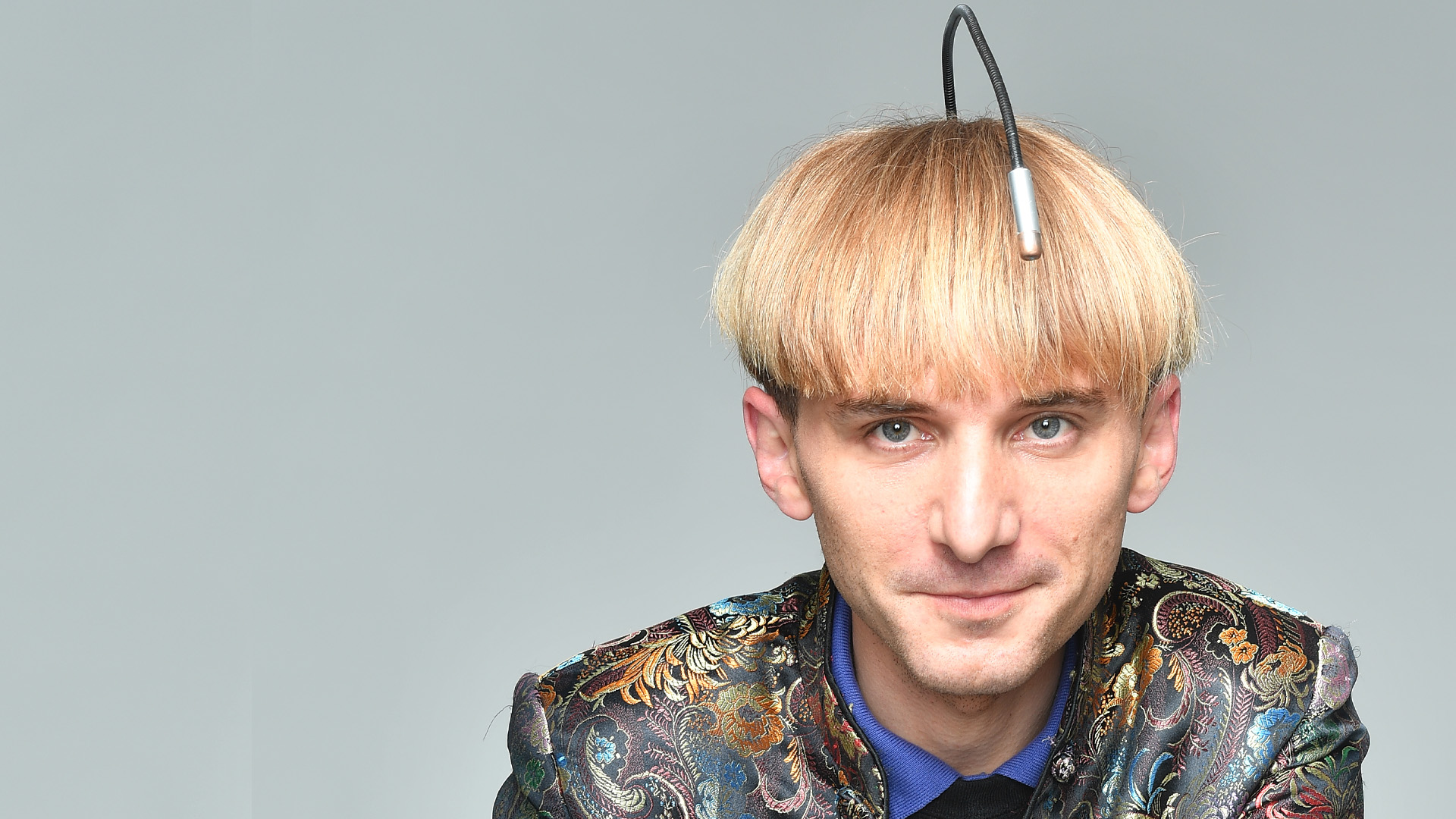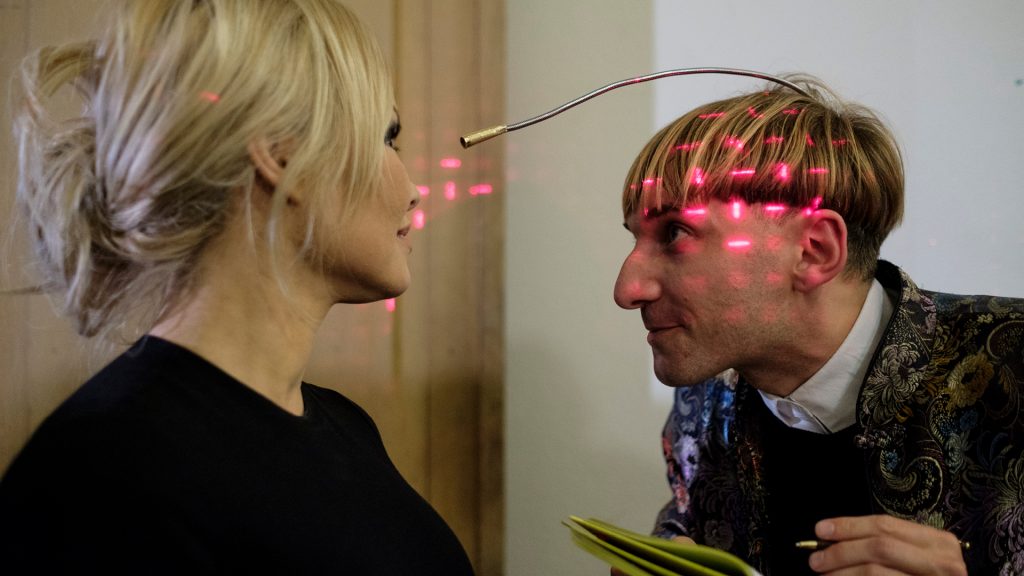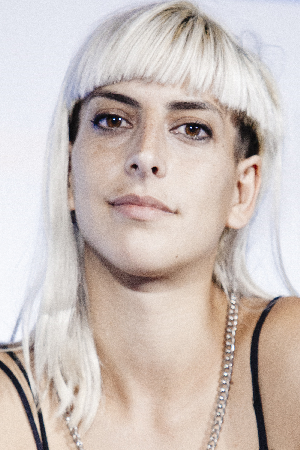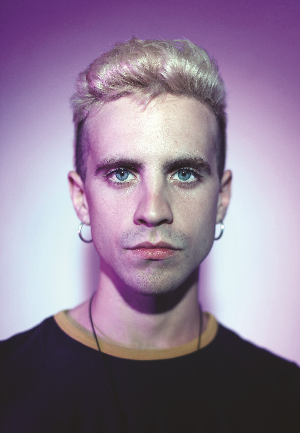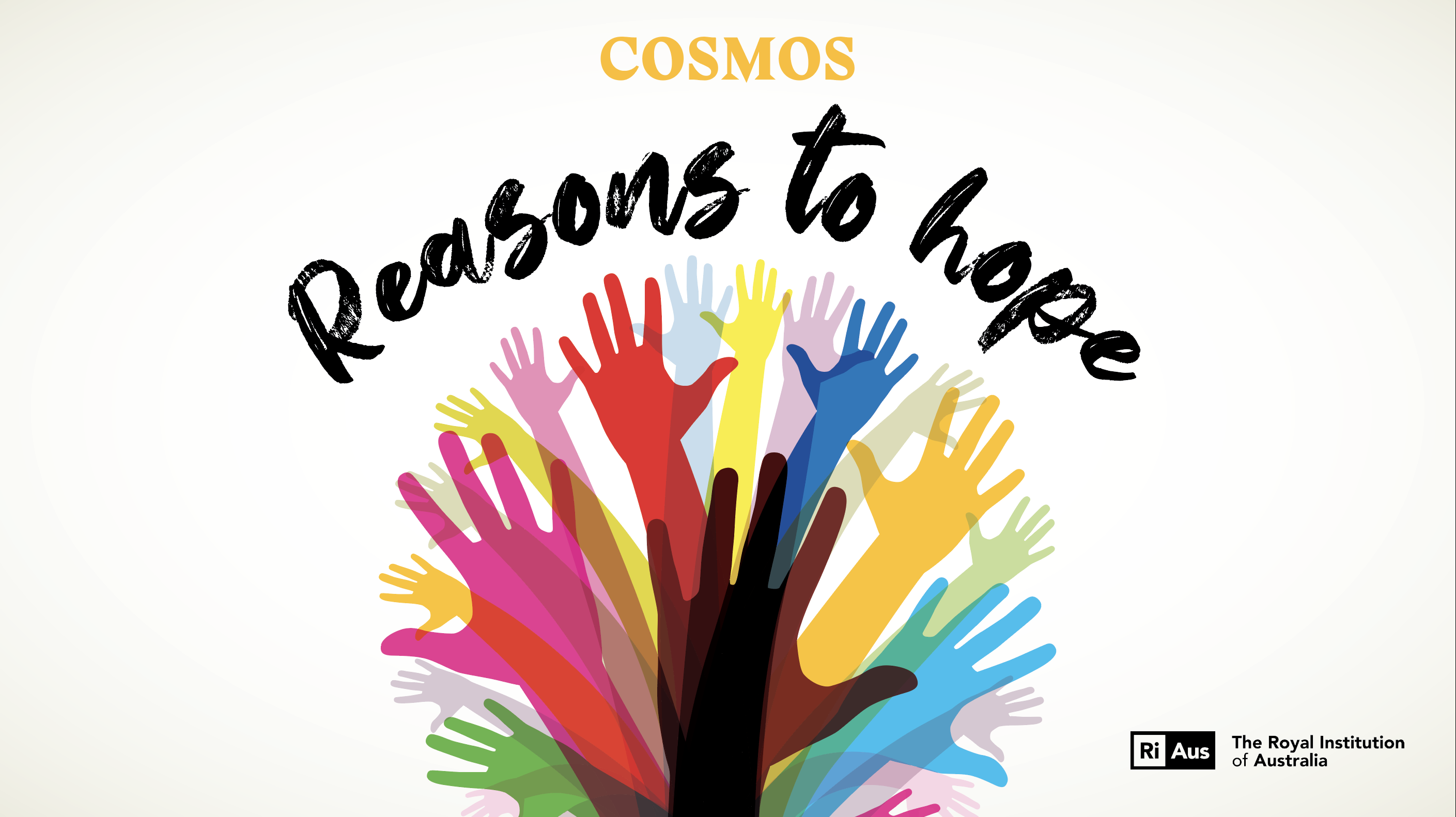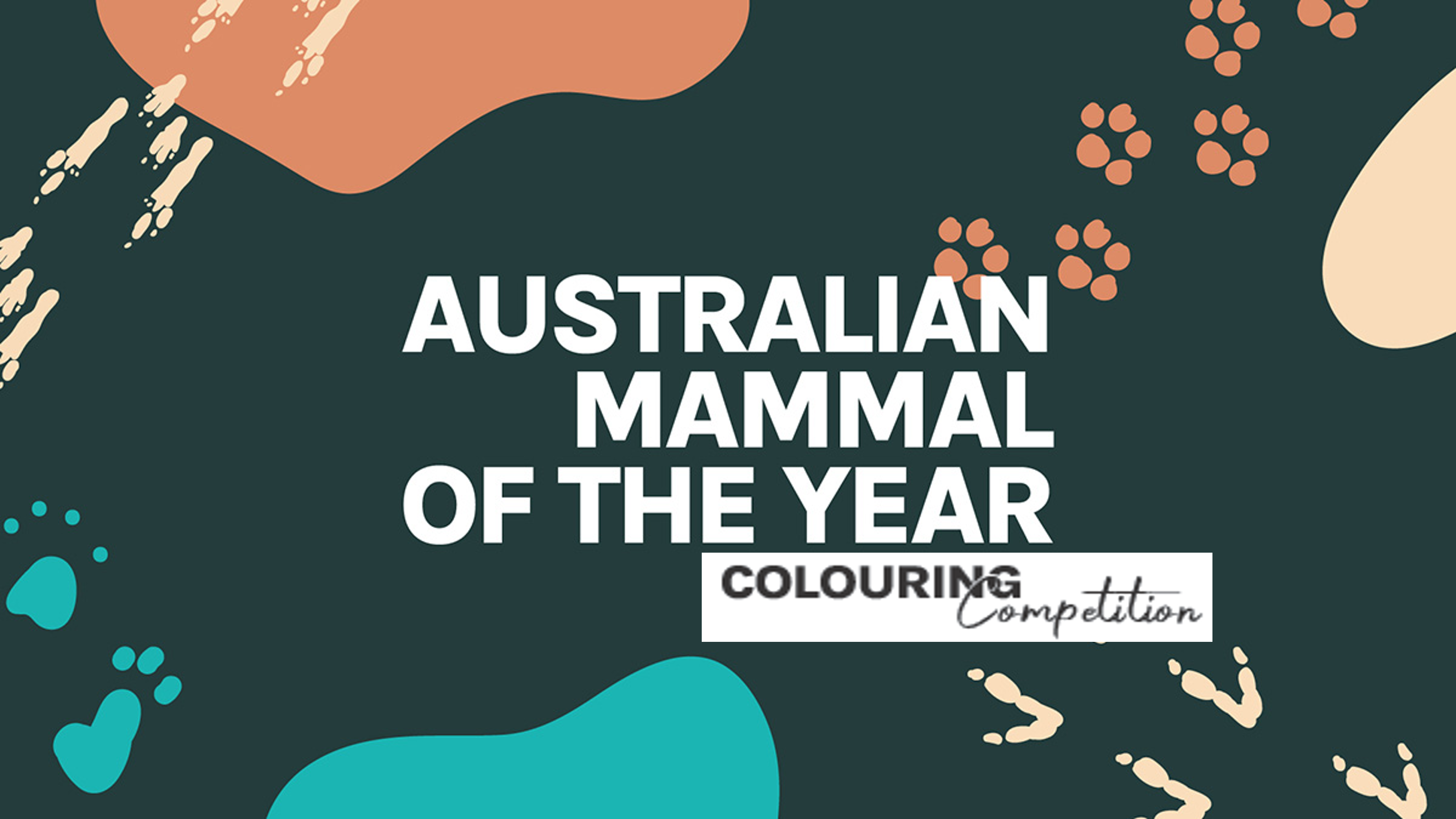Stephen Fleischfresser talks with the world’s first legally recognised cyborg, Neil Harbisson, about how he experiences the world. The article explains how Neil Harbisson found a connection between colour and other frequencies – like sound. His antenna allows him to see all 360 degrees of the colour wheel without having to look at them.
This captivating article from Cosmos magazine issue 84 is best suited to students in years 5–10 studying Biological and Physical Sciences. It provides a particularly good platform for a discussion of Science as a Human Endeavour, especially with the ethics involved in technological advances and whether non-human organs are ethical.
Word count: approx. 3000.
London’s Science Museum has been an inspiration to many, for many years. It holds machine wonders ranging from steam engines, to the Babbage Difference engine – an early computer – to a reconstruction of Crick and Watson’s double helix model of DNA. Back in 1995, however, it was a more mundane exhibition that was to change the world for 11-year-old Neil Harbisson.
It started him on the complex, challenging and at times confrontational road to becoming the world’s first legally recognised cyborg – complete with an antenna surgically implanted in his skull.
Harbisson grew up in Barcelona with his Catalonian mother and Irish father. He wrote music and studied piano from a young age, but not all his senses were so attuned. The way people would talk about colour didn’t really resonate for him.
“As a child I thought I was seeing colours, but that I couldn’t see some, or that I was confusing them”, he tells Cosmos.
He and his family decided that he must be colour blind – but that was to change.
“In the Science Museum there was a section where you could have a colour blind test, and that’s where we found out,” he says, “because that’s where we realised that I wasn’t seeing the Ishihara tests, to see what type of colour blindness you have.”
He couldn’t see them at all. Later tests revealed he had a rare condition known as achromatopsia.
“I was always interested in sound,” he says, “but from the moment I knew that I couldn’t see it, I became interested in colour.”
It became, in fact, “a bit like a religion”. “Gods are invisible, but people keep talking about them, but colour seemed very similar to these ghosts or spirits that are bouncing around objects.”
More than that, he could see the results of this invisible force – its effects on people and society – and he wanted to know more.
At age 16, students in Spain are required to choose a Baccalaureate: either science, social sciences/ humanities, or art. Harbisson chose art, thinking it would be the one to let him better understand what he couldn’t see. It became a passion. After finishing school, he enrolled at Dartington College of Arts in the UK, a partner institution to the University of Plymouth, and began to combine his newfound interest in colour with his original love of music.
He then stumbled across Sir Isaac Newton’s work on colour and its relationship to sound.
Using prisms, Newton had broken white light into its constituent colours, then weaved them back together to once more form white.
As a child I thought I was seeing colours, but that I couldn’t see some, or that I was confusing them.
He divided the rainbow of light into seven divisions – red, orange, yellow, green, blue, indigo and violet – not because that was how light really was, but because that’s how many notes there are in an octave. Indigo and orange are artefacts of music, rather than distinct areas of the spectrum. Newton had come to realise that both sound and light were frequencies, a connection that had fascinated the ancient Greeks too.
“That’s where everything started,” says Harbisson, “finding the connection between colour and other types of frequencies like sound.”
At Dartington, he returned to his first love, taking music composition; it was then that Newton’s work inspired an idea.
“My aim was to hear colour,” he says. “In university they encouraged us to use technology to explore new ways of creating music. Most students were creating electronic music, so I didn’t want to do what most students are already doing. So, I thought it would be interesting to create an electronic musician, instead of creating electronic music. I thought that merging the technology would be more interesting.”
With Adam Montandon, a student from the University of Plymouth, Harbisson designed a head-mounted camera attached to a five-kilogram computer backpack which converted colour to sound. His first taste of colour came through a pair of headphones.
The technology evolved from there. Volume levels came to represent saturation, and microtones – tones in between the traditional musical notes – were used to represent all 360 degrees of the colour wheel. His mind evolved too: he developed more-than-perfect pitch within an octave, able to distinguish vanishingly small microtones.
This system was a rough attempt to implement an initial sketch of how to hear colour. “The plan at the very beginning was to have a third eye implanted in my forehead. The third eye would allow me to perceive colour through sound, but then I realised that having the organ in my forehead would only allow me to sense the colours in front of me, whereas an antenna would allow me to see colours 360 degrees without having to look at them basically.”
Harbisson also decided to bypass such external technology as headphones, opting instead for bone conductance. Bone, much like wood, is a superb conductor of sound, and a metal mould fitted at the back of his head generated the sound that passed into his ears though the bone.
His colour sense also expanded, partly for reasons of physics. Newton had tried to spread the visible spectrum across an octave, but his task was futile as, at best, it approximates a major sixth.
“The colour-to-sound scale that Newton did is not correct, it’s subjective,” says Harbisson. “The theory that he proposed was not based on reality.
An antenna would allow me to see colours 360 decrees without having to look at them.
Now we know that red has a frequency of 420 millions of millions of waves per second, which means at the frequency of this note we would hear a note between F and F#.” The task of bringing together sound and light is trickier than it seems.
Harbisson’s solution was to devise two scales that he can switch between. The first is the sonochromatic scale – a term he coined. It refers to the 360 microtones of visible light transposed into one octave.
Also: Self-heal like a squid
The other is a pure transposition from colour to sound, but this is far from straight forward, as Newton discovered. “The problem is that when you transpose colour into sound, all of the visual colour spectrum fits within less than one octave,” Harbisson says.
“F is not a visual colour, it’s infrared. So that’s why I created two different scales. One allows the visual spectrum to fit within one octave, F to F , and the other scale is pure, so it doesn’t fit within an octave and that’s the correct one. And then you can put infrared in F and further up you can complete the octave by filling in with ultraviolet.”
In 2012, Harbisson wrote of his extended senses: “So now I can also perceive infrared, which means I can hear if there are movement detectors in a room or if someone is pointing at me with a remote control. The good thing about hearing ultraviolet is that you can hear if it’s a good day or a bad day to sunbathe. Ultraviolet is a dangerous colour, a colour that can kill us, so it would actually be useful for all of us to be able to perceive it.”
The ethics of becoming technology
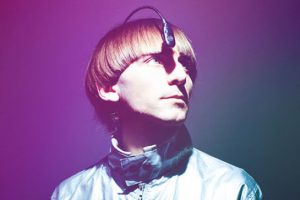
By 2010, the clunky computer and camera had shrunk to an antenna and a specialised chip attached to the rear of Harbisson’s skull. At this stage he had functionally been a cyborg for many years, but he wanted to go further.
He wanted to become technology.
He hatched a plan to have the technology permanently integrated into his body: “to have the antenna drilled into my skull so that the bone and the antenna would merge”.
But this proved far from straight forward. Despite having built the device and zeroed in on the upper occipital bone as the optimal location for its installation, finding a medical professional to do the deed was difficult.
A number told him it was impossible. Eventually, one advised him to go through formal channels if he wanted even a chance to have the surgery done.
“So, I presented the surgery to a bioethics committee,” he says, “and they decided it was not ethical to have it implanted for three reasons. Because it’s not a pre-existing body part, so if it was a leg or an arm it would be ethical, but a nonhuman organ like an antenna was not ethical.
“Also sensing infrared and ultraviolet is not ethical either. They said it’s going beyond human perception. And they were also worried about the image the hospital would have if someone came out with an antenna sticking out from their head.”
In 2013 he found an anonymous surgeon who agreed to carry out the procedure, and subsequently he met numerous doctors who saw the ethical situation as being much like the one faced in the 1950s and ’60s with transgender surgery. “They feel the same as we feel, that this will be normal in the future,” he says.
The process of adapting to the new cyborg sense was ongoing from the very first technological instantiation, and it hasn’t always been easy.
“At the beginning I was in a bubble, sensing a chaos of sound and colours and I was trying to make sense of the whole chaos,” he says. “Wherever I would look I would hear different notes and I was shocked to realise there was colour absolutely everywhere, so I was for many months in a bubble and, in fact, for many years I was not able to express what I was feeling.”
Hearing colour began to change his experience of the world. Normal sounds became colourful: telephone tones started to sound green, the BBC pips became turquoise.
His sense of fashion also changed dramatically. He now dresses quirkily in blocks of vibrant colour. He deals with this with a well-worn gag: “I used to dress in a way that looked good, now I dress in a way that sounds good.” In fact, he dresses in chords: majors for upbeat days and minors for the more sombre.
People, too, began to change: a face he might have once thought attractive may sound awful and a plain face may sound sublime. His very notion of beauty changed.
Altering the senses with cyborg art
Being a cyborg is primarily about identity, one that solidified for Harbisson when he first began to dream in colour. He has moved from using technology to being technology. This became somewhat official when the British Government finally agreed to let him have a passport photograph in which the antenna featured. His argument was that the electronic equipment wasn’t obscuring his real self, it was part of his real self.
That didn’t solve his problems, however. He’s been attacked in London, Honduras and Barcelona, where Spanish secret police believed he was filming them and tried to rip the antenna off.
In 2010, Harbisson started the Cyborg Foundation with his long-time friend, artistic partner and fellow cyborg Moon Ribas (she has an implant that allows her to sense distant earthquakes). The Foundation is “an international organisation that aims to help humans become cyborgs, defend cyborg rights and promote cyborg art”.
And art is key to understanding Harbisson the cyborg. He has painted vinyl albums with the colours that predominate as he listens to them and has composed sound portraits of famous faces from Daniel Radcliffe to Al Gore. He also has turned famous speeches into visual colour compositions, confusing audiences who couldn’t pick a speech by Hitler from one by Martin Luther King.
He has conducted face concerts, converting the colours of the audience’s faces to tones that he modulates and augments. “The good thing about doing this,” he wrote wryly in 2012, “is that if the concert doesn’t sound good, it’s their fault.”
Transhumnists hope to upgrade and improve the human body through the use of biomedical engineering.
But as his time as a cyborg continues, his ideas about art have also been transformed. “I now see the antenna as the art,” he says.
“The art of creating your own senses the art of creating your own organs, it should be seen as a new form of art. I see it as cyborg art.”
He has referred to this cyborg art as “perceptionism”, and it is underpinned by the central element of his own experience: a transformation in his perception of the world and of the way his mind works.
This perceptionist cyborg art hopes to encounter the world anew through the addition of senses not traditionally human, many of which are borrowed from other nonhuman species. Harbisson feels closer to other species than he does to robots; he adores nature documentaries and cares little for science fiction.
And this is why, in 2017, he founded the Transpecies Society, an organisation similar to the Cyborg Foundation but for those whose identity sits within the non-human. The society also seeks to design and build new senses, often built by reverse engineering the senses of other species – a kind of biomimetics.
“The system I am using to perceive colour is similar to that of dolphins,” he tells Cosmos. “Dolphins don’t have ears, but they perceive sound through bone conduction, so it is the same system in the back of my head. Sensing infrared and ultraviolet is a sense that many species have. So that’s why we use the word transpecies, because most of our senses and organs already exist in other species.”
It is this transpecies dimension of Harbisson’s cyborg identity that marks him as fundamentally different from many others keen for a cyborg future. There most visible cyborg advocates are known as transhumanists, many of which belong to the organisation H+, or Humanity Plus.
Transhumanists hope to upgrade and improve the human body through the use of biomedical engineering, computer science, prosthetics, neuroscience, robotics and any other science and technology that can be harnessed to go beyond the human.
The more radical hope eventually to become something else entirely, something posthuman. Many call for “morphological freedom”, the right to alter their bodies in any way they see fit and to have surgical interventions for reasons beyond the medical.
Here Harbisson is in agreement with them, but that is where the similarities end. He sees himself as becoming different, not better. “Transhumanists’ aim is to become better humans, at least all of them that I have read of. Their aim is to become better, whereas my aim is not to become better, or to become a better human, my aim is to access organs that are not traditionally human. There is a full stop there. There is nothing beyond that. I want to sense things that I can’t sense.”
Harbisson also has extended his sense by modifying his implant to be Bluetooth capable. He can connect to the internet and often spends time hearing the colours of the Earth via the International Space Station’s video livestream. He has given permission to a small group of far flung friends to send colours directly to his head, a feature also extended to visitors to an art gallery.
When asked what limit of hybridity he wouldn’t exceed, Harbisson is stumped. He pauses and thinks, “I don’t know… I don’t know.” He and Moon Ribas have Bluetooth-enabled teeth allowing them to secretly communicate via Morse code, but his biggest upcoming project is something called the Solar Crown, which seeks a perceptionist version of Einstein’s relativistic time dilation.
He wants to implant a new organ between the skin and bone of his head that will produce a spot of heat that will orbit his skull. “It is already finished, it’s here,” he says excitedly, “but we need to change some things because I was burning myself. It takes 24 hours to do a complete circle and I want my brain to get used to the 24-hour cycle.
“When it becomes completely subliminal, which might take years, we want to see if this can allow us to change the perception of time. So, if I want a situation to last longer, I make the point of heat go slower or faster, so I feel the time is stretching, or going faster. The aim is to see if we can create time illusions.”
There are an increasing number of cyborgs in the world. Harbisson is surrounded by artist cyborgs, but there are many more functional cyborgs out there. He sees it as the beginning of something new for humanity.
“This is just the beginning of the renaissance of our species,” he says. “Now we’re doing it in a very primitive way by adding chips and technology into the body, but the next step in this century is to do it biologically. My antenna would be 3D printed with my own DNA. The addition of ultraviolet and infrared perception would be done by the modification of my genes, not by adding a chip in my head.
“We will be modified genetically without merging with technology and then this will be also inherited in following generations. If you modified yourself genetically then there will be children born with new senses and organs.”
He sees this almost as a speciation event in human evolutionary history and as a necessity for the environment.
Harbisson is surrounded by artist cyborgs, but there are many more functional cyborgs out there.
“There will be lots of subspecies. I don’t think we should be afraid of this because I think this is positive,” he explains. “We’ve been changing and designing the planet for thousands of years. We’ve been transforming the planet into a cyborg. We’ve been modifying it and destroying it in a way, but if we design ourselves and modify ourselves, we won’t have to change the planet anymore.
“If we all had night vision, all the cities would be dark, so the use of artificial light would stop. That will be much better for the planet. We wouldn’t be annoying other species if we could control our temperature. We’ll stop using heaters and air-conditioners. Instead of changing the temperature of the planet, we will change our own temperature.”
The cyborg may be art for Harbisson, but the future of cyborgs is also a matter of survival of our species and of countless nonhuman species too. “We either change ourselves and stop changing the planet, or I don’t think there’s any other solution.”
This article was written by Stephen Fleischfresser, adjunct research fellow at the Monash Bioethics Centre in Melbourne for Cosmos Magazine Issue 84.
Cosmos magazine is Australia’s only dedicated print science publication. Subscribe here to get your quarterly fill of the best Science of Everything, from the chemistry of fireworks to cutting-edge Australian innovation.
Login or Sign up for FREE to download the educational resources
